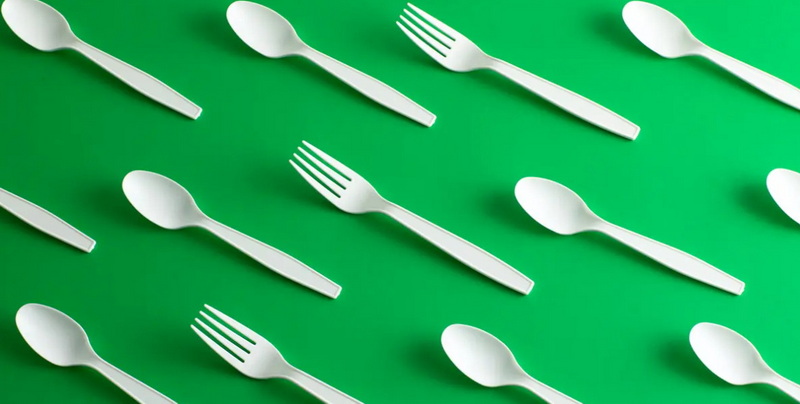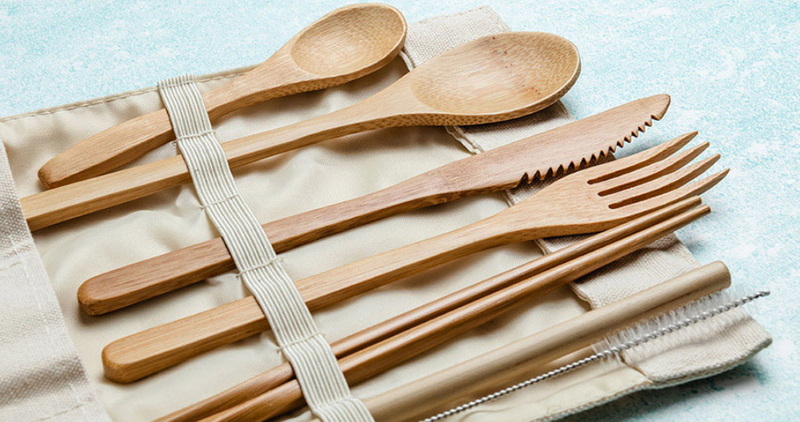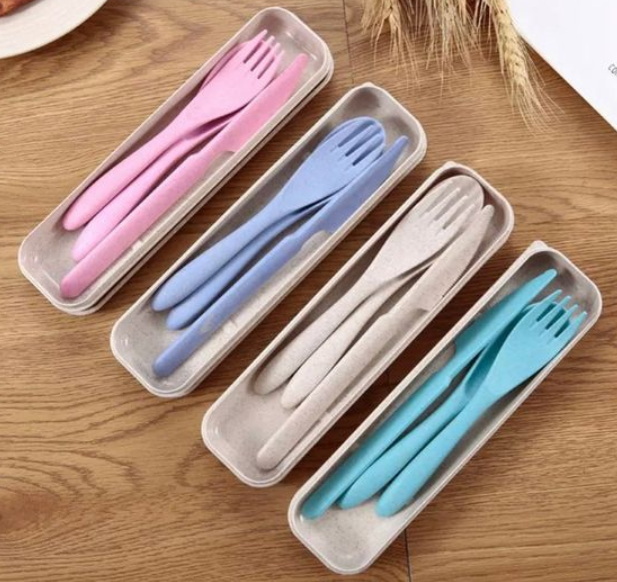
Content Menu
● Introduction to Non-Disposable Plastic Cutlery
>> Environmental Impact of Plastic Production
● Alternatives to Non-Disposable Plastic Cutlery
>> 1. Bamboo Cutlery
>> 2. Reusable Metal Cutlery
>> 3. Compostable Cutlery
>> 4. Edible Cutlery
>> 5. Wheat Straw Cutlery
>> 6. Wooden Cutlery
>> 7. Plant Fiber Cutlery
● Benefits of Switching to Eco-Friendly Alternatives
● Challenges and Future Directions
● Case Studies and Real-World Applications
● Conclusion
● FAQ
>> 1. What are the environmental impacts of non-disposable plastic cutlery?
>> 2. What are some eco-friendly alternatives to plastic cutlery?
>> 3. How does switching to eco-friendly cutlery benefit the environment?
>> 4. What are the economic benefits of using eco-friendly cutlery?
>> 5. How can we promote the use of eco-friendly cutlery?
● Citations:
The question of whether non-disposable plastic cutlery is eco-friendly is complex and multifaceted. While plastic cutlery is durable and reusable, its production and disposal still pose significant environmental challenges. In this article, we will explore the eco-friendliness of non-disposable plastic cutlery, discuss its environmental impact, and examine alternative options that are more sustainable.

Introduction to Non-Disposable Plastic Cutlery
Non-disposable plastic cutlery, unlike its single-use counterparts, is designed to be reused multiple times. This reduces the volume of plastic waste generated from frequent use of disposable cutlery. However, the production of plastic cutlery involves non-renewable resources such as fossil fuels, which contribute to greenhouse gas emissions and climate change.
Environmental Impact of Plastic Production
The production of plastic cutlery is energy-intensive and involves the extraction of fossil fuels, contributing to greenhouse gas emissions and resource depletion. Despite being reusable, non-disposable plastic cutlery still requires significant resources for its manufacture and, if not properly managed, can end up in landfills or oceans, contributing to pollution. Plastic cutlery is made from materials that are not biodegradable, meaning they do not break down naturally in the environment. Over time, plastic cutlery accumulates in landfills and water sources, contributing to pollution and harm to wildlife. Some estimates indicate that plastic utensils can take up to 1,000 years to decompose, posing a significant environmental threat[1].
Alternatives to Non-Disposable Plastic Cutlery
Given the environmental concerns associated with plastic cutlery, several eco-friendly alternatives have emerged:
1. Bamboo Cutlery
Bamboo is a highly renewable resource that grows quickly without the need for pesticides or fertilizers. Bamboo cutlery is lightweight, durable, and fully biodegradable, making it an excellent alternative to plastic. Bamboo is one of the fastest-growing plants on the planet, making it highly sustainable for long-term use[7].
2. Reusable Metal Cutlery
Metal cutlery, typically made from stainless steel, is durable and can be used for many years. It is more hygienic than disposable options and can be easily cleaned and reused. Metal cutlery requires minimal maintenance and can be recycled at the end of its life cycle, reducing waste significantly.
3. Compostable Cutlery
Compostable cutlery, often made from cornstarch or sugarcane, is biodegradable and compostable. However, it requires specific conditions to decompose properly and may not be suitable for all environments. Compostable cutlery breaks down within months in industrial composting facilities, significantly reducing landfill waste[8].
4. Edible Cutlery
Edible cutlery, made from food-grade materials like wheat bran, presents an innovative solution to cutlery waste. It is not only edible and nutritious post-use but also completely reduces waste. This type of cutlery adds a fun and innovative element to dining and is especially suitable for parties and kid-friendly events[2].
5. Wheat Straw Cutlery
Wheat straw cutlery is an innovative solution utilizing agricultural by-products. It is biodegradable and compostable, making it a great alternative to traditional plastic cutlery. Despite being lightweight, it is strong and suitable for both hot and cold foods[2].
6. Wooden Cutlery
Wooden cutlery is made from sustainably sourced wood and is biodegradable and lightweight. However, only a small part of the tree can be used in the production of wooden cutlery, leading to unnecessary waste. Wooden cutlery is compostable and has a lower carbon footprint compared to plastic utensils[5].
7. Plant Fiber Cutlery
Plant fiber cutlery is made from agricultural by-products such as corn starch, wheat straw, and sugarcane. This cutlery is 100% compostable and decomposes quickly in commercial composting facilities. It repurposes agricultural waste and is free from harmful chemicals[5].

Benefits of Switching to Eco-Friendly Alternatives
Switching from non-disposable plastic cutlery to eco-friendly alternatives offers several benefits:
- Reduces Plastic Waste: By choosing reusable or biodegradable options, we significantly reduce the amount of plastic waste that ends up in landfills and oceans.
- Saves Resources: Eco-friendly alternatives often require fewer resources for production and can be sourced from renewable materials.
- Economic Benefits: While the initial cost of eco-friendly cutlery may be higher, it can save money in the long run by reducing the need for frequent purchases of disposable cutlery.
- Healthier for Humans: Traditional plastic cutlery can leach harmful chemicals when exposed to heat or acidic foods. Eco-friendly alternatives are generally safer for human health[8].
Challenges and Future Directions
Despite the advantages of eco-friendly alternatives, there are challenges to overcome:
- Cost and Accessibility: Some eco-friendly options are more expensive than traditional plastic cutlery, making them less accessible to all consumers.
- Education and Awareness: Raising awareness about the environmental impact of plastic cutlery and the benefits of alternatives is crucial for widespread adoption.
- Infrastructure for Composting: Compostable cutlery requires proper composting facilities to decompose effectively. In areas without such infrastructure, its environmental benefits may be limited.
Case Studies and Real-World Applications
Several countries and companies are making significant strides in adopting eco-friendly cutlery:
- Denmark's Transition to Wooden Cutlery: Denmark is actively transitioning to wooden cutlery as part of its goal to become plastic-free by 2030. This shift has already led to a 20% reduction in plastic waste since 2021[5].
- Corporate Initiatives: Many businesses are now offering eco-friendly cutlery options, such as compostable or reusable metal cutlery, to reduce their environmental footprint.
Conclusion
Non-disposable plastic cutlery, while offering some environmental benefits over single-use plastics, still contributes to pollution and resource depletion. Eco-friendly alternatives like bamboo, metal, and compostable cutlery provide more sustainable solutions. By adopting these alternatives and promoting a culture of reuse, we can significantly reduce plastic waste and contribute to a healthier planet.

FAQ
1. What are the environmental impacts of non-disposable plastic cutlery?
Non-disposable plastic cutlery still contributes to environmental issues due to its production from non-renewable resources and potential for ending up in landfills or oceans if not properly managed.
2. What are some eco-friendly alternatives to plastic cutlery?
Eco-friendly alternatives include bamboo, reusable metal, compostable cutlery, edible cutlery, wheat straw cutlery, wooden cutlery, and plant fiber cutlery. Each offers unique benefits such as biodegradability and reusability.
3. How does switching to eco-friendly cutlery benefit the environment?
Switching to eco-friendly cutlery reduces plastic waste, conserves resources, and decreases greenhouse gas emissions associated with plastic production.
4. What are the economic benefits of using eco-friendly cutlery?
While eco-friendly cutlery may have a higher upfront cost, it can save money in the long term by reducing the need for frequent purchases of disposable cutlery.
5. How can we promote the use of eco-friendly cutlery?
Promoting eco-friendly cutlery involves raising awareness about its benefits, supporting policies that encourage sustainable practices, and making these alternatives more accessible and affordable.
Citations:
[1] https://www.anchenggy.com/blog/why-is-plastic-cutlery-bad-for-the-environment-understanding-the-harmful-impact.html
[2] https://flavorfulz.com/blog/disposable-cutlery-alternatives/
[3] https://albizpackaging.co.uk/blogs/news/making-the-change-to-eco-friendly-cutlery
[4] https://refork.com/news/plastic-cutlery-vs-biodegradable-alternatives/
[5] https://whatisgreenliving.com/best-eco-friendly-disposable-cutlery/
[6] https://ahimsahome.com/blogs/childrens-health-blog/the-surprising-impact-of-plastic-utensils-on-our-planet
[7] https://foogogreen.com/blog/ecofriendly-alternatives-to-plastic-cutlery/
[8] https://www.bioleaderpack.com/disposable-compostable-cutlery-eco-friendly-utensils/
[9] https://www.restaurantware.com/blogs/catering-essentials/disposable-vs-reusable-tableware-for-catering
[10] https://www.sowinpak.com/news_details/The_Future_of_Eco-Friendly_Dining_Paper_Cutlery.html
[11] https://greenpaperproducts.com/blog/eco-friendly-cutlery
[12] https://de.duni.com/en/magazin/einwegbesteck
[13] https://www.allianceonline.ie/blog/2023/03/why-biodegradable-disposable-cutlery-is-a-better-choice/
[14] https://repurpose.global/blog/post/the-problem-with-plastic-plates-and-a-possible-solution
[15] https://cosmosecofriends.com/biodegradable-cutlery-the-sustainable-choice-for-a-greener-tomorrow/
[16] https://www.anchenggy.com/blog/best-eco-friendly-cutlery-guide-disposable-and-non-disposable.html
[17] https://www.anchenggy.com/blog/best-disposable-plastic-cutlery-alternatives.html
[18] https://www.ecobifrost.com/advantages-of-using-biodegradable-disposable-cutlery/
[19] https://purpleclay.com/blogs/news/plastic-cutlery-woes-how-your-takeout-habit-is-harming-the-planet
[20] https://www.linkedin.com/pulse/future-dining-how-sustainable-cutlery-shaping

















